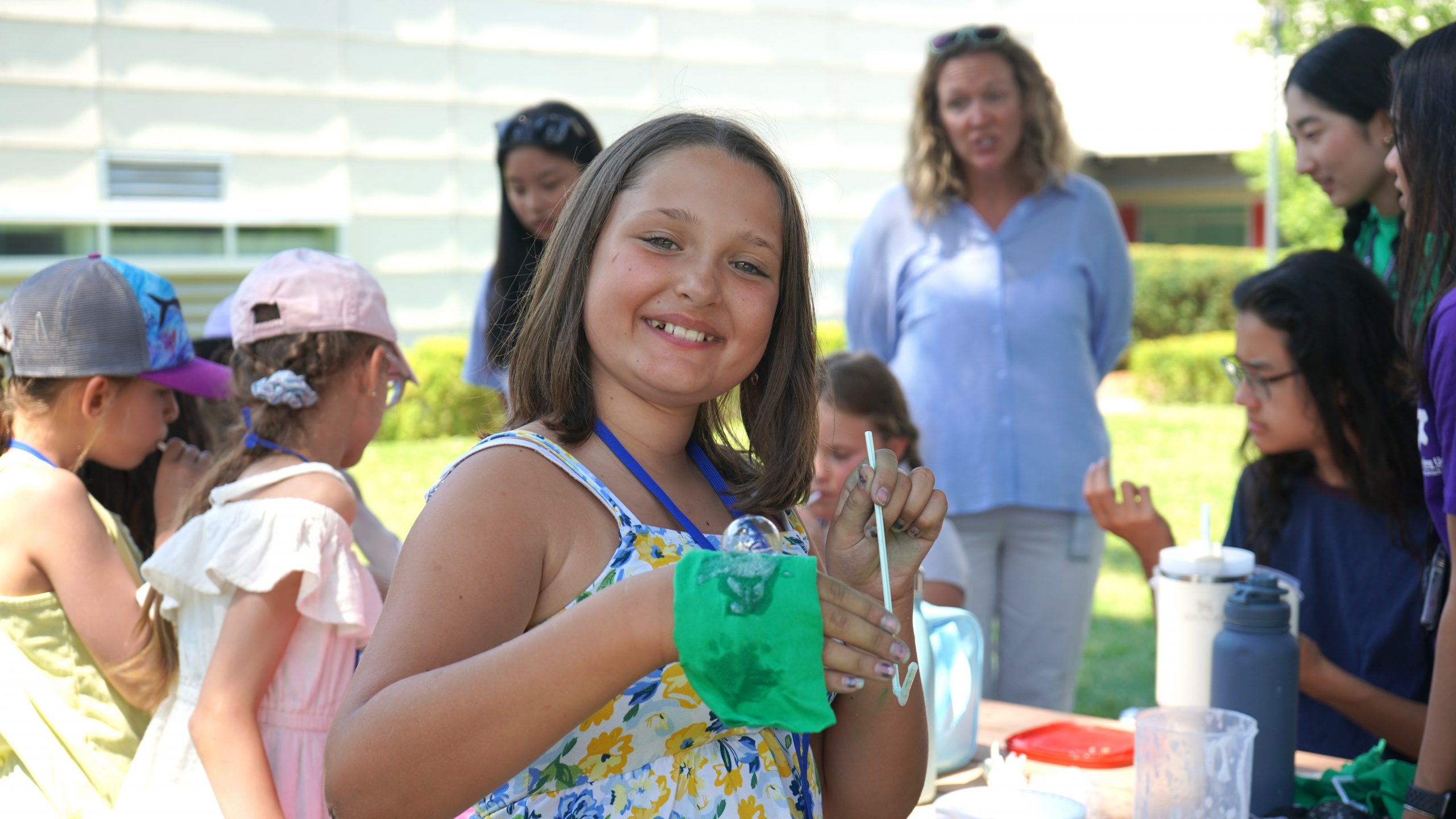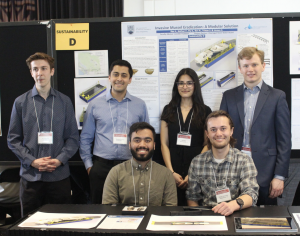Eyes on the sky: A high recision tracking system for laser communication with moving payloads
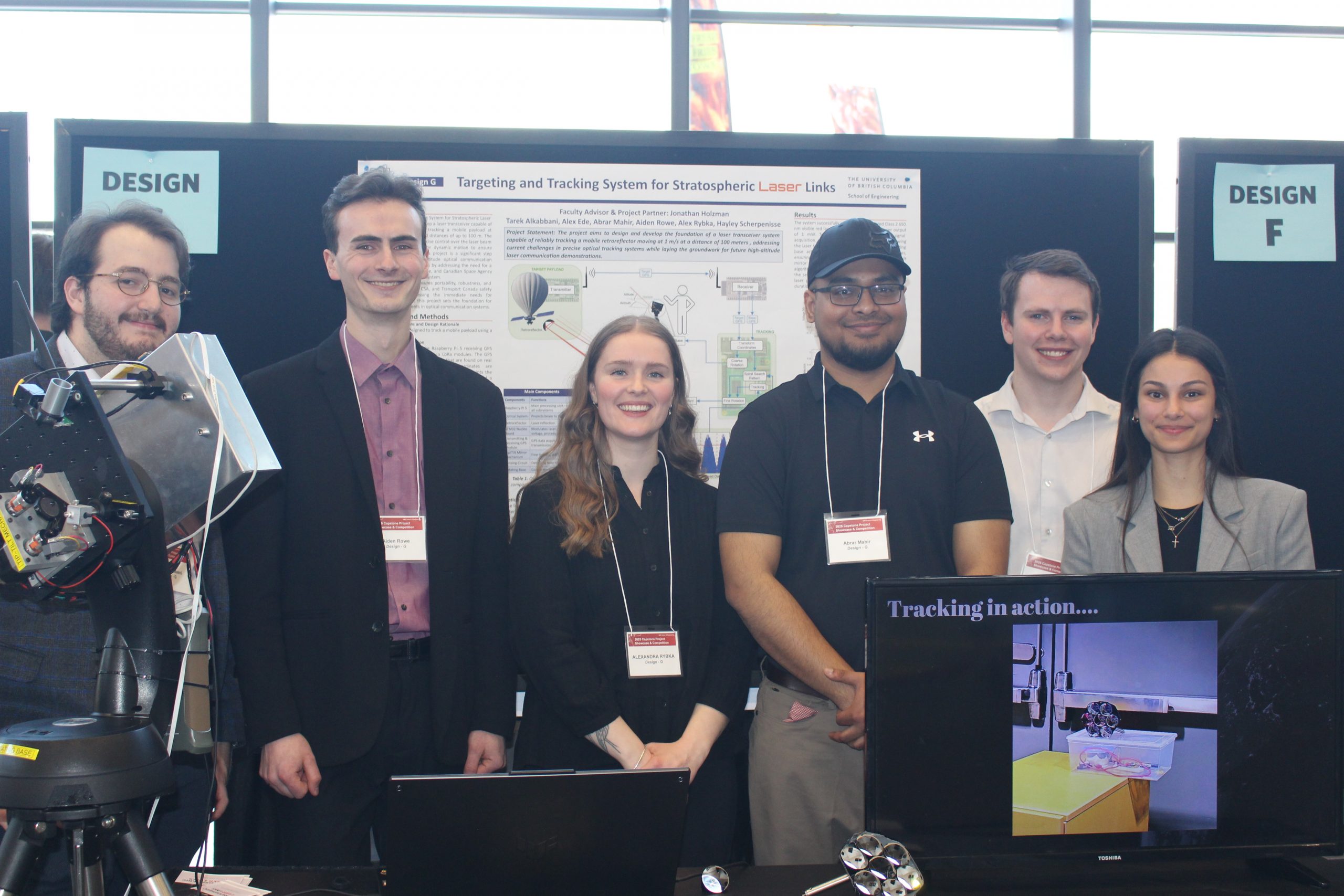
2024-25 UBC School of Engineering Capstone Group Design G (in no particular order): Abrar Mahir, Aiden Rowe, Tarek Alkabbani, Alexandra Rybka, Hayley Scherpenisse, and Alex Ede.
Project Title: Targeting and Tracking System for Stratospheric Laser Links
Student Group: Abrar Mahir, Aiden Rowe, Tarek Alkabbani, Alexandra Rybka, Hayley Scherpenisse, and Alex Ede.
Community Partner: UBCO Integrated Optics Laboratory with support from Dr. Johnathan Holzman.
Students in the Capstone Design Project course partner with UBCO’s Integrated Optics Laboratory to design a high precision, payload tracking system for aerospace applications.
What would be the “elevator pitch” for your project?
We designed a prototype to acquire and track a moving payload at 1 m/s, at a distance of 100 m, using a low-power laser. This system would facilitate optical communication with low-orbit satellites, like weather balloons. Using GPS data and a custom search algorithm, our system can detect and lock onto a target in motion with high precision. This high precision is required to establish the communication link. It integrates optical, electrical, and mechanical subsystems, like a tip-tilt mirror and a low-power detection circuit, to establish and maintain an optical link via a retroreflector-equipped payload. Tested terrestrially, the system is fully compliant with Transport Canada’s safety standards and marks a key step forward towards safer, more reliable laser-based communications for aerospace applications.
What inspired you to pursue this particular project?
A few of our team members have previously worked on a project with the Canadian Space Agency (CSA) and SEDs Canada. This was the Stratoneers team that ran experiments in the upper atmosphere with the support of Dr. Holzman, investigating the effect of space radiation on solid-state memory. This project also focused on building a full flight condition profile for stratospheric flights. During that project, we identified that the CSA lacked a system that allows for real-time transmission of experimental data. This was due to a variety of reasons, mainly stemming from regulations, as well as power and mass constraints. This inspired the development of an optical communications system for these moving platforms. The lab also identified additional applications for such a technology that further increased this project’s incentives.
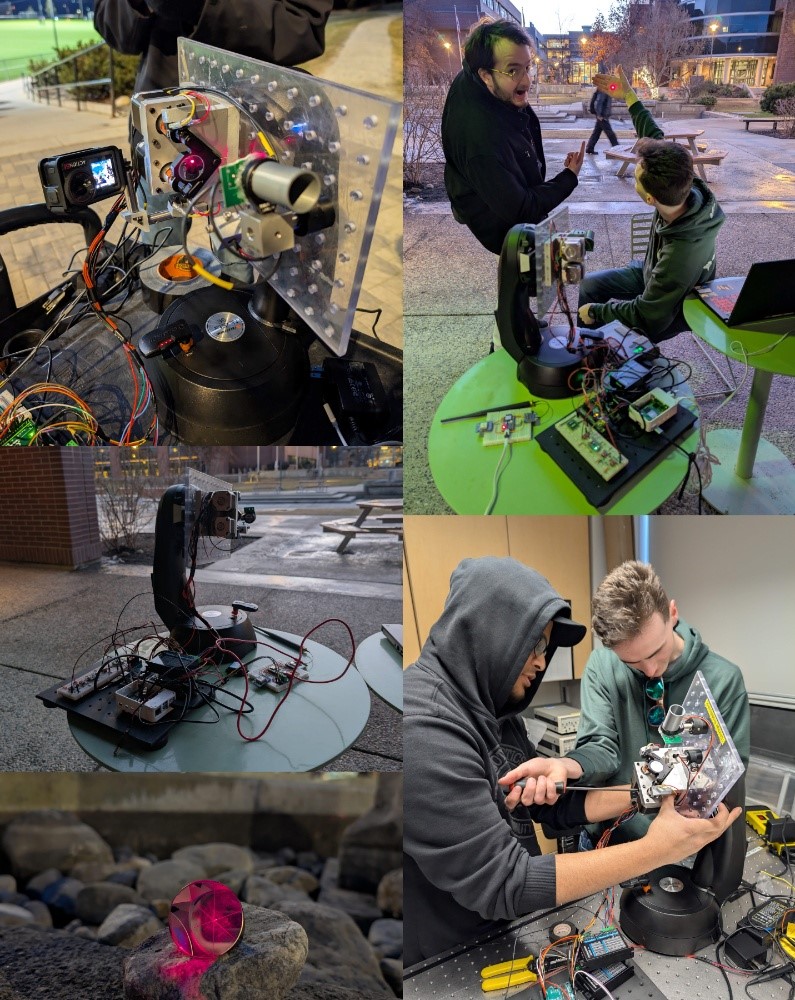
Design G at various stages of development throughout the project.
What was the biggest challenge you faced while working on your project?
With the scale of the project, we organized it into a variety of subsystems. The real challenge came near the end of the project when it came to bringing all these different subsystems together-we faced so many integration issues. And keep in mind, we had integration in mind since the start. Even when each of the parts worked flawlessly individually, when combined, we faced unexpected issues nonstop. It really showed us the importance of systems engineering and some of the real hurdles in practical engineering.
What’s the funniest or most unexpected thing that happened while working on your project?
This ties in to some of the challenges we faced, but it was in some ways ironic that we didn’t account for it and a bit frustrating at the same time-the weather! With the capstone course running mostly through the winter, the weather ruined a lot of our work. Because our testing required us to be outdoors, anytime it rained, we had to cancel our experiments to prevent damage to our electronics. It became very clear that we should have thought about this at the start of the term, and thought of waterproofing our prototype from the very start. The number of times we prepared for testing, packed all our equipment for an hour, and went to the site, just for it to start raining (even when the forecast said it wouldn’t), was borderline comical. Especially coming closer to the end of the term with the start of spring, it kind of became a joke that we would never test our prototype, no matter what progress we had achieved in the lab.

The GPS transmitter breadboard.
What excited you the most about your project?
The fact that we were able to be a part of developing the groundwork for future high-altitude laser communication demonstrations. Being a part of Dr. Holzman’s laboratory and working with lasers was definitely a highlight.
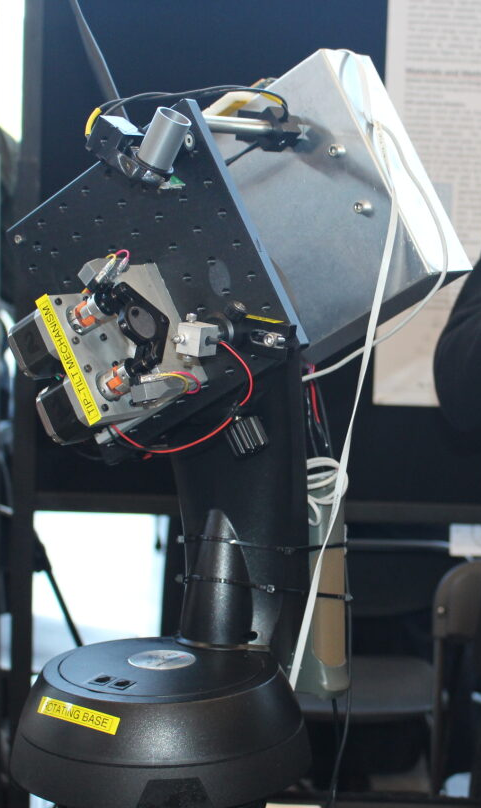
The tip tilt mechanical apparatus.
What is the most interesting/surprising thing you learned while working on your project?
Laser communication technology is actively being developed and deployed, particularly for deep space communications. It was exciting to be a part of this exotic area of research and work alongside Dr. Holzman. His lab at UBC develops all-optical and optoelectronic devices for free-space optical (FSO) and terahertz technologies, as well as for solar tracking/optimization.
What skills or knowledge did you gain during Capstone that you think will be the most useful/surprise people when you enter the workforce?
Our takeaway during this capstone project was about developing the ability to collaborate effectively with people of diverse skills and experience, and learning how to adapt your approach to make the most of each person’s strengths to achieve a shared goal. We also learned to recognize the importance of using more iterative testing during the design phase to identify and address potential issues early in the process. Finally, we realized that the most important lessons weren’t just the technical ones. We learned the value of accountability, clarity, and knowing when to stop and reflect. These values are easy to talk about, but in crunch time, they’re difficult to maintain. That’s exactly when they matter the most. As we move forward in our careers, we’ll carry those lessons with us, because being a better engineer doesn’t just happen despite the pressure; it happens because of how you choose to handle it.
As we move forward in our careers, we’ll carry those lessons with us, because being a better engineer doesn’t just happen despite the pressure; it happens because of how you choose to handle it.
What’s one piece of advice you’d give to future Capstone students that you wish you had known at the start?
Don’t underestimate the design process and pursue your concerns more thoroughly. Early on, we hoped to find an out-of-the-box “aha” moment-an elegant solution that would make everything click. But we quickly realized that the design process isn’t about breakthroughs; it’s a framework to make the best decision at every stage. This project taught us to respect the process: to explore options thoughtfully, to challenge technologies that look good on paper but don’t fit the problem, and to learn from the decisions we took. This iterative experience with the cycles of testing, rethinking, and rebuilding, is the pathway to succeeding not only in this endeavor but in engineering in general.
What does the future hold for your project? If you had unlimited resources and time, what would you do to take it to the next level?
The scale of the project means that we could have endlessly optimized and improved all the different modules. To take it to the next level, though, we would have improved the detection range by increasing our sensitivity, and also clean up our current systems integration. This would take this project one step closer to being realizable and useful in the field. We also had so many different ideas to improve performance. We wanted to incorporate real-time aviation and weather data to improve our prediction algorithm and to make the project safer.
About the Capstone Design Project course: Students in their final year of the Bachelor of Applied Science Program at UBC School of Engineering participate in the Capstone: Engineering Design Project course – ENGR 499. Students use the knowledge and expertise accquired throughout their undergraduate degree to solve real-world engineering problems presented by industry partners, UBC faculty researchers, or the students themselves. It is also an opportunity for students to work with clients, navigate team dynamics and face the everyday challenges that occur in the industry. At the end of the year, students display their projects at the Capstone Design Project Showcase & Competition where they are judged by a select group of engineering industry leaders and UBCO faculty. To celebrate their innovation, we are highlighting some of these interesting projects from the 2024-2025 class!
Learn more about Capstone and how to submit a project proposal for 2025-2026!





